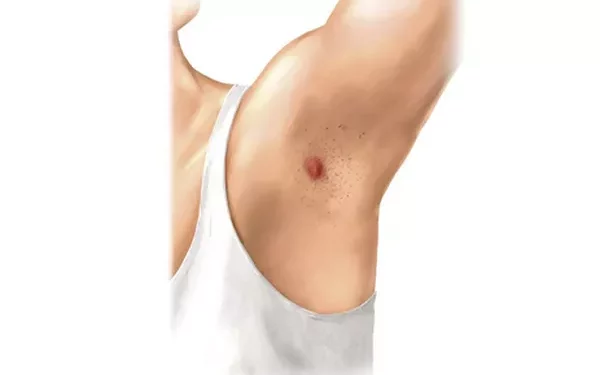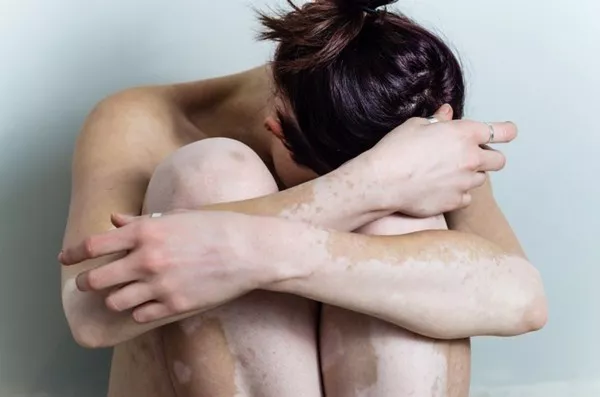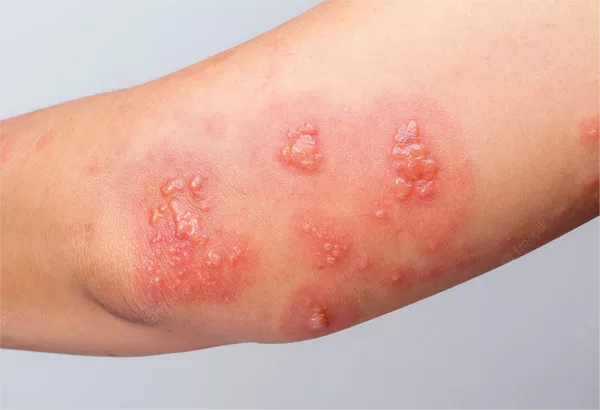Hidradenitis suppurativa (HS) is a chronic skin condition characterized by painful, inflamed nodules, abscesses, and sinus tracts, typically affecting areas where skin rubs together, such as the armpits, groin, buttocks, and under the breasts. Managing HS can be challenging due to its recurrent nature and the significant discomfort it causes. One of the most common and practical treatment approaches involves the use of topical creams. This article delves into the best creams for managing HS, their mechanisms of action, and their effectiveness.
Understanding Hidradenitis Suppurativa
Hidradenitis suppurativa is a complex condition with an unclear etiology, though it is thought to involve follicular occlusion, inflammation, and infection. The disease often begins after puberty and can persist for years, severely impacting the quality of life. Key symptoms include painful lumps, abscesses, and scarring. The severity of HS can vary, with some individuals experiencing mild symptoms while others suffer from extensive and recurrent lesions.
Treatment Approaches for Hidradenitis Suppurativa
HS management typically involves a combination of medical and surgical treatments. Topical therapies, systemic medications, and lifestyle modifications play crucial roles in controlling the condition. Among these, topical creams are often used for their direct application to affected areas, providing targeted relief with fewer systemic side effects.
Criteria for Selecting the Best Cream
When choosing a cream for HS, several factors should be considered:
- Anti-inflammatory properties: The cream should reduce inflammation to alleviate pain and swelling.
- Antibacterial effects: Since HS lesions are prone to infection, the cream should help prevent or treat bacterial infections.
- Wound healing promotion: Enhancing the healing process can reduce scarring and speed up recovery.
- Skin barrier restoration: Maintaining the integrity of the skin barrier is crucial for preventing further damage and irritation.
- Minimal side effects: The cream should have a favorable safety profile, especially for long-term use.
Top Creams for Hidradenitis Suppurativa
Clindamycin Phosphate 1% Topical Lotion
- Mechanism of Action: Clindamycin is an antibiotic that inhibits bacterial protein synthesis, effectively reducing bacterial colonization and infection in HS lesions.
- Effectiveness: Clinical studies have shown that clindamycin topical lotion can significantly reduce the number of inflammatory lesions in HS patients. It is particularly effective in mild to moderate cases.
- Application: Applied twice daily to the affected areas.
- Side Effects: Generally well-tolerated, though some users may experience local irritation or dryness.
Resorcinol 15% Cream
- Mechanism of Action: Resorcinol has keratolytic properties, promoting the exfoliation of dead skin cells and reducing follicular occlusion. It also has anti-inflammatory effects.
- Effectiveness: Studies have indicated that resorcinol can reduce pain and promote the healing of HS lesions. It is particularly useful for draining nodules and abscesses.
- Application: Typically applied once or twice daily, depending on the severity of the lesions.
- Side Effects: Possible skin irritation and peeling.
Mupirocin 2% Ointment
- Mechanism of Action: Mupirocin is an antibiotic that inhibits bacterial protein synthesis, effectively targeting Staphylococcus aureus and other common skin pathogens.
- Effectiveness: Useful for treating secondary infections in HS lesions. While not a primary treatment for HS, it can be beneficial in managing superimposed bacterial infections.
- Application: Applied to the affected areas up to three times daily.
- Side Effects: Local irritation or allergic reactions in some individuals.
Corticosteroid Creams (e.g., Hydrocortisone 1%)
- Mechanism of Action: Corticosteroids reduce inflammation by suppressing the immune response and inhibiting inflammatory mediators.
- Effectiveness: Can provide rapid relief from inflammation and pain. Suitable for short-term use during acute flares.
- Application: Applied sparingly to the affected areas, usually once or twice daily.
- Side Effects: Long-term use can lead to skin thinning, striae, and other side effects. Therefore, corticosteroids are recommended for short-term use only.
SEE ALSO: Can You Get Hidradenitis Suppurativa on Your Face?
Retinoid Creams (e.g., Tretinoin 0.05%)
- Mechanism of Action: Retinoids normalize follicular epithelial desquamation, preventing the formation of comedones and reducing follicular occlusion.
- Effectiveness: While primarily used for acne, retinoids can also benefit HS by reducing the formation of new lesions and promoting skin turnover.
- Application: Applied once daily, typically in the evening.
- Side Effects: Can cause dryness, irritation, and increased sensitivity to sunlight.
Aloe Vera Gel
- Mechanism of Action: Aloe vera has anti-inflammatory, antibacterial, and wound-healing properties.
- Effectiveness: Provides soothing relief, reduces inflammation, and promotes healing of minor lesions. Useful as a complementary therapy.
- Application: Applied as needed to the affected areas.
- Side Effects: Generally well-tolerated, though some individuals may be allergic to aloe vera.
Zinc Pyrithione Cream
- Mechanism of Action: Zinc pyrithione has antimicrobial and anti-inflammatory properties, which can help reduce bacterial colonization and inflammation in HS lesions.
- Effectiveness: Can reduce the severity and frequency of flares. Often used in combination with other treatments.
- Application: Applied once or twice daily to affected areas.
- Side Effects: Minimal side effects, though some users may experience mild irritation.
Combining Topical Treatments with Other Therapies
While topical creams can provide significant relief, HS often requires a multifaceted treatment approach. Combining topical treatments with systemic therapies (such as oral antibiotics, immunosuppressants, or biologics) can enhance overall effectiveness. Additionally, lifestyle modifications, including weight management, smoking cessation, and dietary changes, can also play a critical role in managing HS.
Conclusion
Selecting the best cream for hidradenitis suppurativa involves considering the individual’s specific symptoms, severity of the condition, and overall treatment goals. Clindamycin phosphate, resorcinol, mupirocin, corticosteroids, retinoids, aloe vera, and zinc pyrithione are among the most effective topical treatments for HS. Each has unique properties that can address different aspects of the condition, from reducing inflammation and bacterial colonization to promoting healing and preventing new lesions.
It’s essential for individuals with HS to work closely with their healthcare providers to develop a comprehensive and personalized treatment plan. This plan may include a combination of topical treatments, systemic medications, and lifestyle modifications to achieve the best possible outcomes and improve quality of life.
Related Topics:



























